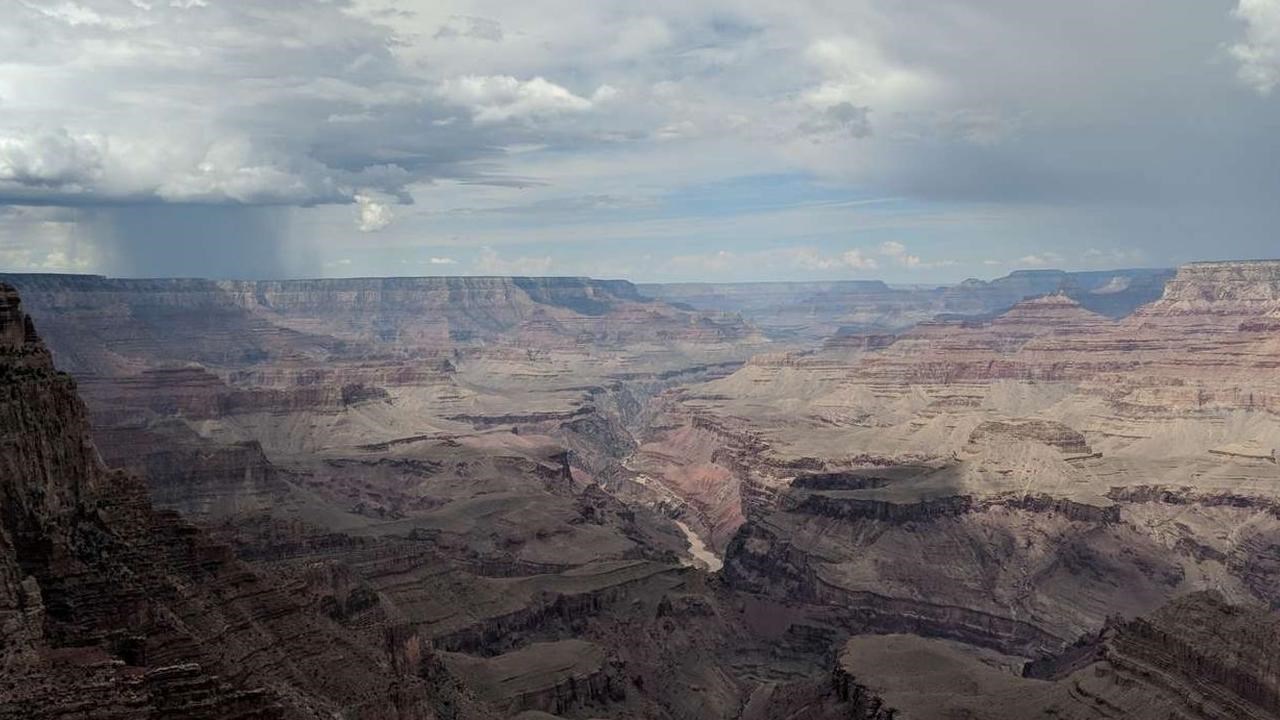Last updated: January 12, 2024
Place
Lipan Point

NPS/T. Karlovetz
Historical/Interpretive Information/Exhibits, Parking - Auto, Scenic View/Photo Spot, Wheelchair Accessible
Lipan Point features some of the widest and most expansive canyon views along the South Rim, as well as the longest perspective of the Colorado River. This makes it an ideal spot to enjoy sunrise, sunset, and the night sky.
On a clear day, you can see the Vermillion Cliffs 45 miles (72 km) to the northeast and the curving river to the west as it enters the Inner Gorge of the canyon.
This spacious panoramic view features many spires, buttes, and temple formations that resemble ancient pyramids. Westward views seem to stretch on forever, and the canyon walls present a tapestry of blacks, grays, reds, browns, and tans in a wide variety of rough and smooth textures.
From here, you can look down to the very bottom of the canyon to view the mighty Colorado River and the tilted layers of the Grand Canyon Supergroup. These unique rocks are exposed in just a few places within the canyon, and are visible at only a few viewpoints. Hidden among the titled layers and cradled by the river is Unkar Delta, where ancient Puebloan people once cultivated beans, corn, and squash.
Listen for the roar of Hance Rapid, almost four miles (6.4 km) away, and for the cries of hawks and other raptors along this important migration route. Forests on this side of the canyon and on the North Rim, just eight miles (13 km) away, make Lipan Point an ideal spot for birds crossing the canyon.
Geology in Depth: Grand Canyon Supergroup
The tilted strata visible deep within Grand Canyon at this viewpoint are part of a series of rock layers known as the Grand Canyon Supergroup. From here, look across the canyon to see them in the walls of the North Rim. The lower half of the Supergroup, known as the Unkar Group (1255-1100 million years old), was deposited by north-flowing paleorivers carrying sand and mud from now-eroded mountains in what is now the region of West Texas. The upper half of the Supergroup (which is not visible from here) is known as the Chuar Group (780-729 million years old), which was deposited in a shallow sea while all of Earths' continents were joined together as the supercontinent Rodinia. Stromatolites in both groups record single celled life that existed in shallow seas. Chuaria fossils, also found within these layers, are small 750-million-year-old single-celled fossils that record a time of diversification of microbial life.
In this part of the canyon, instead of being confined by the hard Vishnu basement rocks within the narrow Inner Gorge to the west, the Colorado River instead winds its way through layers of soft, purple sandstone belonging to the Dox Formation. This is why Lipan Point features such spectacular views of the river. Above these purple layers is the black Cardenas Basalt, formed by lava flows erupting due to continental collisions during the formation of the supercontinent Rodinia over one billion years ago. To the west, one can see another stretch of river cutting down through layers of purple, orange, and brown rocks; these are the Bass Formation, Hakatai Shale, and Shinumo Sandstone, respectively. One can also see where the river crosses from these layers into the unlayered black and pink Vishnu basement rocks underneath to begin forming the Inner Gorge.
